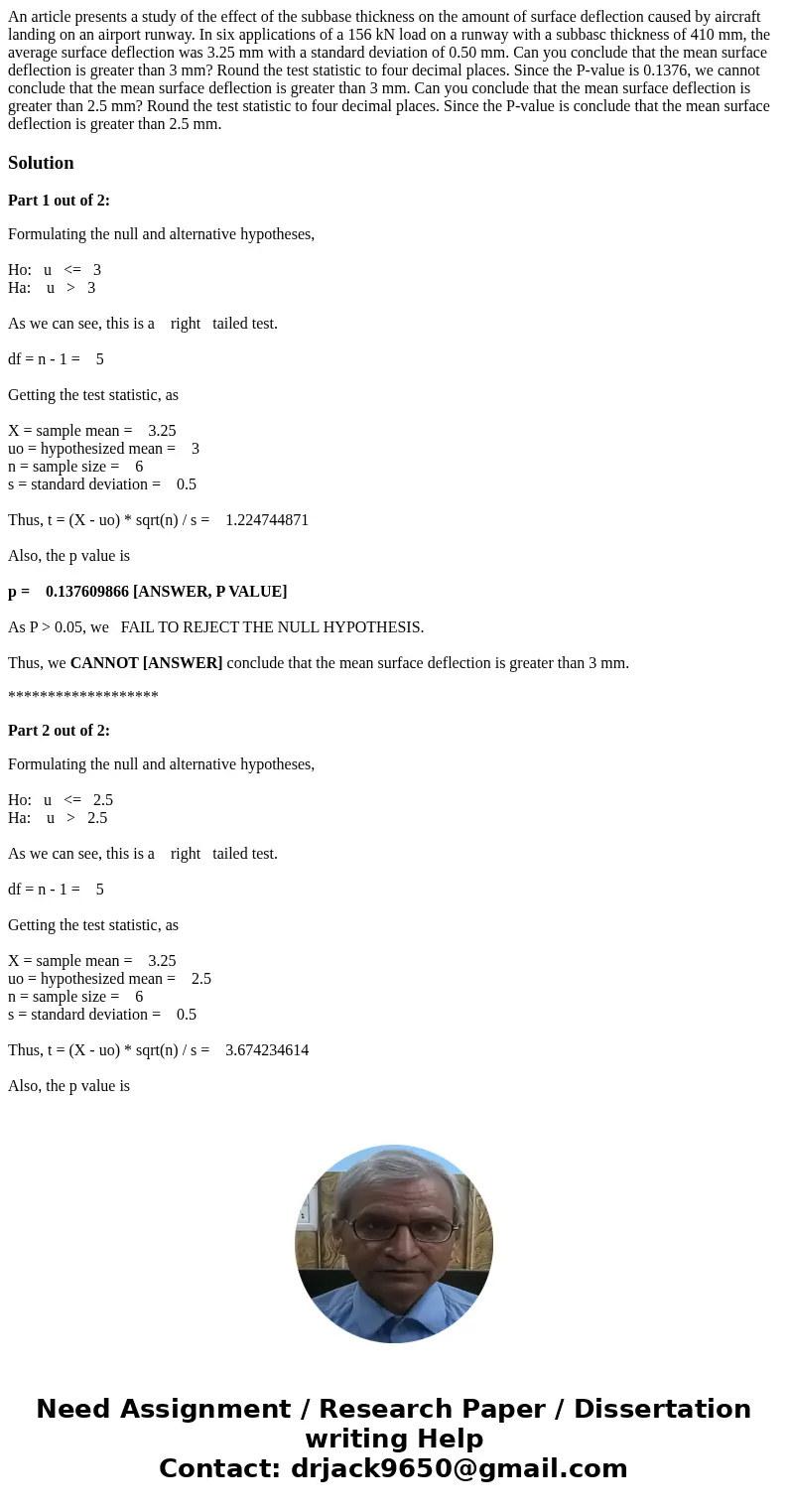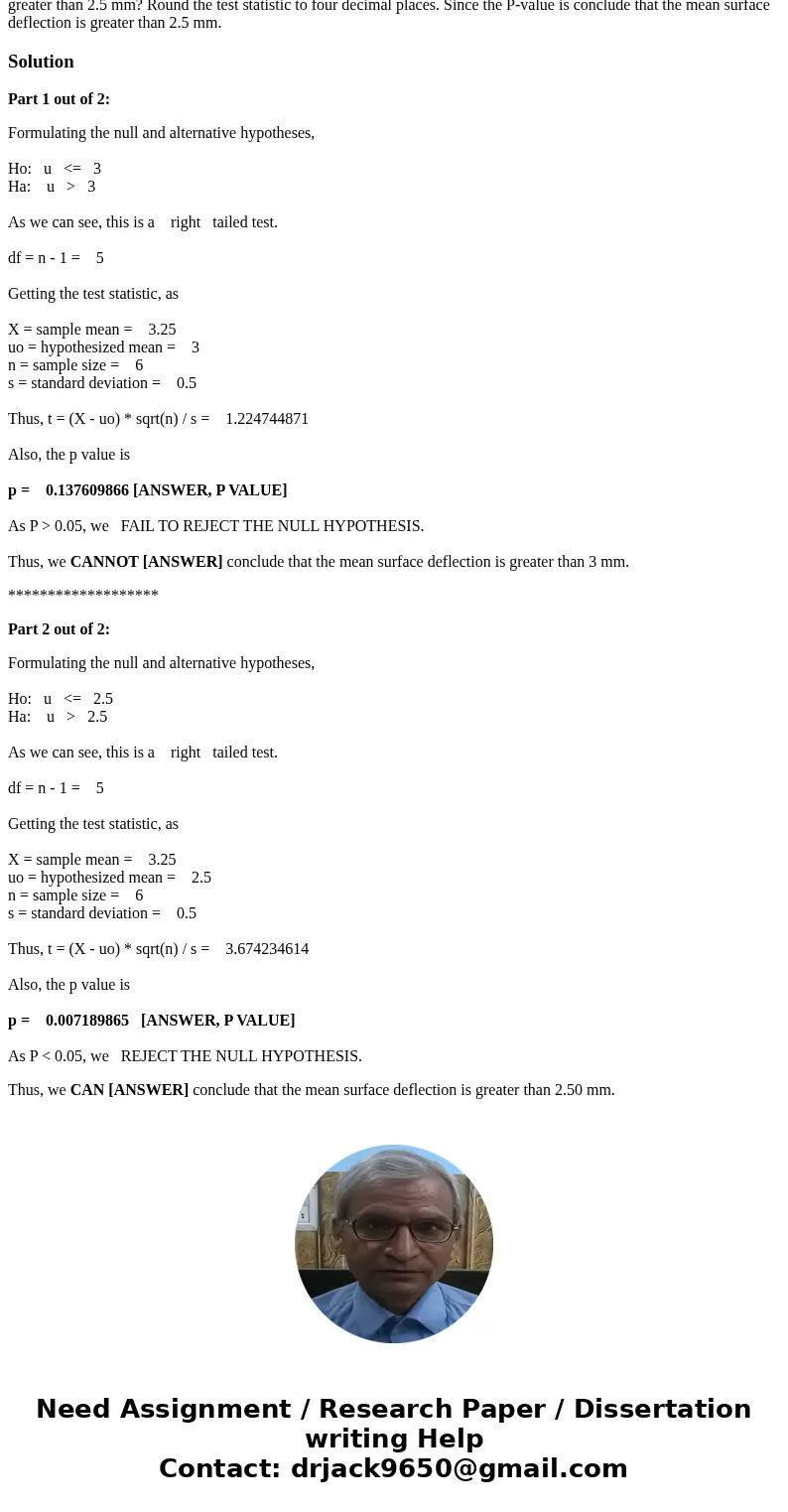An article presents a study of the effect of the subbase thi
Solution
Part 1 out of 2:
Formulating the null and alternative hypotheses,
Ho: u <= 3
Ha: u > 3
As we can see, this is a right tailed test.
df = n - 1 = 5
Getting the test statistic, as
X = sample mean = 3.25
uo = hypothesized mean = 3
n = sample size = 6
s = standard deviation = 0.5
Thus, t = (X - uo) * sqrt(n) / s = 1.224744871
Also, the p value is
p = 0.137609866 [ANSWER, P VALUE]
As P > 0.05, we FAIL TO REJECT THE NULL HYPOTHESIS.
Thus, we CANNOT [ANSWER] conclude that the mean surface deflection is greater than 3 mm.
*******************
Part 2 out of 2:
Formulating the null and alternative hypotheses,
Ho: u <= 2.5
Ha: u > 2.5
As we can see, this is a right tailed test.
df = n - 1 = 5
Getting the test statistic, as
X = sample mean = 3.25
uo = hypothesized mean = 2.5
n = sample size = 6
s = standard deviation = 0.5
Thus, t = (X - uo) * sqrt(n) / s = 3.674234614
Also, the p value is
p = 0.007189865 [ANSWER, P VALUE]
As P < 0.05, we REJECT THE NULL HYPOTHESIS.
Thus, we CAN [ANSWER] conclude that the mean surface deflection is greater than 2.50 mm.


 Homework Sourse
Homework Sourse